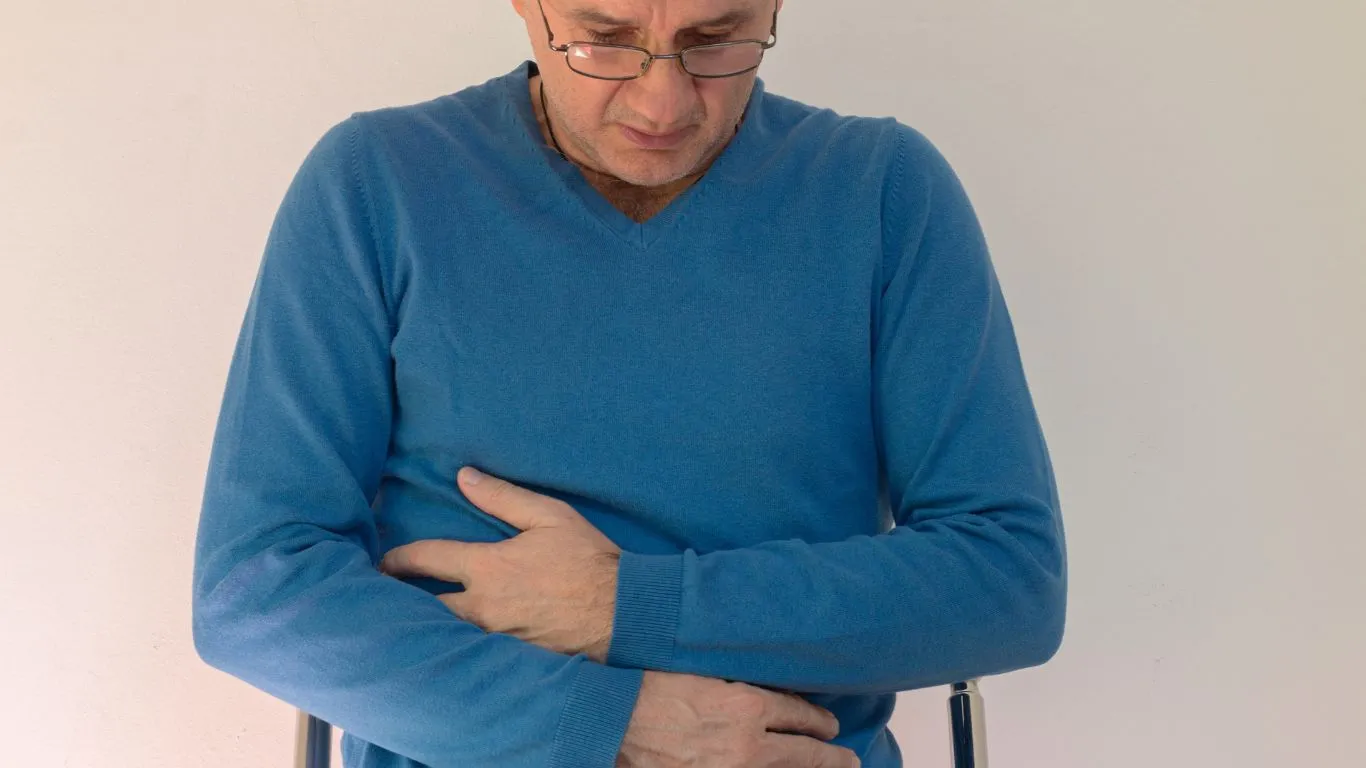How to Eat Pasta with GERD: 7 Delicious Ways to Enjoy Pasta Safely
Dealing with GERD (Gastroesophageal Reflux Disease) can be a real struggle, especially when it comes to enjoying the foods you love. One food that often pops up on the “maybe not” list for GERD sufferers is pasta. I get it—pasta is comfort food, and cutting it out completely feels like a major loss. But don’t worry, you don’t have to say goodbye to your favorite pasta dishes. With a few adjustments, you can still enjoy a delicious bowl without triggering your GERD symptoms. So, how to eat pasta with GERD? Let’s dive into some tips and tricks that make pasta a friendly option for those with reflux issues.
Understanding GERD and How it Affects Your Diet
If you have GERD, you probably already know that certain foods can make your symptoms worse. GERD happens when stomach acid frequently flows back into the esophagus, causing irritation. Common symptoms include heartburn, regurgitation, chest pain, and difficulty swallowing. This can be triggered by a variety of foods, and while pasta itself is generally not on the “do not eat” list, the way it’s prepared and what you pair it with can make a huge difference.
Now, you might be wondering, how exactly does pasta fit into all of this? Well, pasta in its simplest form is fairly gentle on the stomach—it’s low in fat and usually not acidic, which is great for GERD. However, the sauces and toppings that often come with pasta can be a whole different story. Tomato-based sauces, creamy dressings, and greasy meats are all common offenders when it comes to GERD flare-ups. But don’t worry; there are ways to make pasta a GERD-friendly meal. You just need to be mindful of how you prepare and pair it.

Choosing the Right Pasta
When you’re trying to manage GERD, the first step is making smart choices when it comes to the type of pasta you use. While traditional white pasta is the most common option, it’s not always the best for your digestive system. Whole wheat pasta might be a better choice for GERD sufferers because it’s higher in fiber, which can help regulate digestion and prevent acid reflux. Additionally, whole grain pasta is less likely to cause bloating and discomfort compared to its white counterpart.
If you find that whole wheat pasta is a bit too hearty for your taste, don’t worry—there are plenty of other pasta options. Gluten-free pasta made from rice, quinoa, or corn can also be great alternatives if you’re sensitive to gluten. These options are lighter and easier on the stomach, which is helpful for keeping GERD symptoms at bay. So, whether you prefer classic spaghetti or something more unique, there are pasta choices that can work for you.
How to Prepare Pasta for GERD Relief
Once you’ve chosen the right type of pasta, it’s time to think about how you prepare it. This is where the magic happens. You’ll want to keep your pasta dishes simple and light, steering clear of ingredients that are known to trigger GERD symptoms. For example, avoid heavy oils, excessive butter, or fatty meats. Instead, focus on lighter cooking methods that don’t overwhelm your digestive system.
Start by boiling your pasta until it’s just cooked through, then opt for a small amount of olive oil or a non-dairy butter substitute to toss it with. Olive oil is a great choice because it’s rich in healthy fats, which are easier to digest compared to other oils. Plus, it has anti-inflammatory properties that can help soothe your stomach.
Another key to GERD-friendly pasta is portion control. It’s tempting to fill your plate, but eating smaller portions can help prevent overloading your digestive system. Large meals can increase the pressure in your stomach, which can lead to acid reflux. Try sticking to a single serving of pasta and balance it out with a side of vegetables or a lean protein like chicken or tofu. This not only keeps the meal light but also helps maintain your energy levels without causing digestive discomfort.
What to Avoid When Eating Pasta with GERD

When you’re working with pasta, it’s not just about what you add, but also about what you avoid. Some ingredients are known to make GERD symptoms flare up, and these should be kept to a minimum or avoided entirely when you’re preparing pasta dishes.
- Tomato-Based Sauces: Tomatoes are naturally acidic, and while they may seem like a great pasta companion, they can trigger heartburn and other GERD symptoms. Instead, opt for a lighter sauce like olive oil and garlic or a homemade basil pesto, which is typically less acidic.
- Cheese and Creamy Sauces: Rich, cheesy sauces like Alfredo can be too heavy on the stomach. The high-fat content can slow down digestion and increase acid production. Stick to lighter alternatives such as a small amount of grated Parmesan or a dairy-free option if you’re sensitive to dairy.
- Spicy Ingredients: While a sprinkle of red pepper flakes might give your pasta some zing, spicy foods can irritate the lining of your esophagus and make GERD worse. Skip the hot sauce and spicy meats, and focus on herbs like basil, oregano, and thyme for flavor.
How to Make Pasta Even More GERD-Friendly
So, you’ve got your pasta basics down. But how can you make your meal even more GERD-friendly? Simple additions like vegetables and lean proteins can turn your pasta dish into a full, satisfying meal without irritating your digestive system. Adding in some cooked spinach, zucchini, or bell peppers can help boost the nutritional value of your pasta while keeping it light and easy on the stomach.
If you’re not a fan of vegetables, try adding small amounts of anti-inflammatory foods like ginger or turmeric to your pasta dishes. These spices not only add flavor but also have properties that can help reduce inflammation and support digestion.

Creating GERD-Friendly Pasta Dishes
Now that you know what to avoid and what works best for GERD, let’s talk about some ideas for creating GERD-friendly pasta dishes that you’ll actually look forward to eating. Trust me, I’ve experimented with quite a few recipes in my time, and I’ve learned that small tweaks can make a world of difference when it comes to avoiding that dreaded acid reflux. Here are some pasta recipes and ideas that should sit well with your digestive system.
1. Simple Olive Oil and Garlic Pasta
If you’re looking for a super simple and light pasta dish that’s easy on the stomach, then this is it. The combo of olive oil and garlic makes for a flavorful base, and it’s free from the acidic tomatoes and heavy cream sauces that can trigger GERD symptoms.
Start by cooking your pasta of choice (I recommend whole wheat or gluten-free options for the best digestion). While the pasta is cooking, heat a couple of tablespoons of olive oil in a pan and sauté a couple of minced garlic cloves until they’re fragrant—just be careful not to burn them! Once the pasta is cooked, toss it into the garlic-infused olive oil, and add a pinch of salt and pepper for seasoning. You can also throw in some fresh herbs like basil or oregano to brighten it up.
For a little extra protein, add some grilled chicken or tofu. This dish is light, satisfying, and won’t leave you feeling overly stuffed or uncomfortable, making it perfect for those with GERD.

2. Pesto Pasta
Pesto is a fantastic alternative to traditional tomato-based pasta sauces. It’s fresh, flavorful, and gentle on the stomach. The key ingredient here is basil, which has anti-inflammatory properties and is easy on your digestive system. Plus, pesto is naturally lower in acidity compared to tomato sauce, making it an excellent choice for GERD sufferers.
To make a GERD-friendly pesto, blend together fresh basil, garlic, pine nuts (or walnuts), and olive oil in a food processor. For a creamy twist, you can add a little bit of Parmesan cheese or, if you’re dairy-free, some nutritional yeast. Toss your cooked pasta with the pesto sauce, and enjoy a meal that’s both delicious and soothing on your stomach.
If you want to add a little more nutrition, throw in some steamed broccoli or zucchini, which are both easy to digest and add a nice crunch to the dish.
3. Chicken and Veggie Pasta
If you’re craving something a bit heartier, try making a pasta dish with grilled chicken and veggies. When I make this one, I focus on using vegetables that are known to be gentle on the stomach, such as spinach, zucchini, and bell peppers. These are packed with vitamins and minerals, but they won’t irritate your digestive system.
Start by grilling or baking a chicken breast (or using a lean cut of chicken if you’re more of a dark meat person), then slice it into thin strips. Sauté your choice of veggies in a small amount of olive oil until they’re soft. Once everything’s cooked, toss it together with your pasta of choice. You can add a small amount of olive oil or a dash of low-sodium chicken broth for moisture, but avoid heavy sauces.
One thing I love about this dish is how customizable it is. You can add or subtract veggies depending on what’s in season or what your stomach can handle. Plus, it’s filling without being overly heavy, which is key for GERD sufferers.

How to Add Flavor to Your Pasta Without Irritating GERD
If you’re like me, one of the hardest parts about modifying your diet for GERD is saying goodbye to bold flavors. Pasta can be pretty bland without the rich, tangy tomato sauces or cheesy toppings that we all know and love. But trust me, there are plenty of ways to add flavor to your pasta without triggering a reflux episode. It’s all about using the right ingredients in the right amounts.
Use Fresh Herbs
Herbs like basil, thyme, parsley, and oregano are perfect for adding fresh flavor to your pasta dishes without adding acidity. Fresh herbs are naturally mild on the digestive system, unlike their dried counterparts, which can sometimes be more pungent and irritating. I always recommend adding a handful of fresh herbs at the end of cooking for a burst of flavor. You can even sprinkle some over your pasta before serving to make it look as good as it tastes.
Try Low-Acidity Sauces
If you want to add a little more moisture and flavor to your pasta, try using low-acid sauces like a simple olive oil dressing or a light white wine sauce. You can even make a lemon-based sauce with a small amount of lemon juice and olive oil, just be sure to go light on the lemon so it doesn’t overwhelm your stomach.
Another fantastic option is using a roasted garlic sauce. Roasting garlic brings out its natural sweetness, making it a gentler option for your stomach compared to raw garlic, which can sometimes be a little intense. Just roast your garlic cloves in olive oil until they’re golden and soft, then blend them into a smooth sauce.
Consider Adding Non-Dairy Options
If dairy tends to trigger your GERD, there’s no need to feel like you’re missing out. There are plenty of great dairy-free alternatives for pasta dishes. I’ve swapped out regular cream for coconut milk or cashew cream many times, and it gives the dish that creamy texture without any of the discomfort. Nutritional yeast is another great dairy-free substitute that provides a cheesy flavor without the fat and acidity of actual cheese.

How to Handle Pasta Leftovers with GERD
Leftovers. Let’s be honest, sometimes they’re better than the original meal! When it comes to pasta, if you’ve made more than you can eat in one sitting, you might be wondering how to store and reheat it in a way that’s still GERD-friendly. I know from personal experience that reheating pasta can be tricky—especially if you’ve added things like heavy sauces that can sit heavy on the stomach. But don’t worry, I’ve got some tips for making sure your leftover pasta doesn’t end up causing you discomfort the second time around.
Storing Leftover Pasta
The first step in making sure your pasta is GERD-friendly the next day is proper storage. I always recommend storing pasta in an airtight container, especially if you’ve made it with a mild, olive oil-based sauce or a simple pesto. Tomato-based sauces or creamy sauces should ideally be consumed fresh, as these can sometimes become more acidic as they sit. But if you absolutely need to store it, make sure it’s in the fridge and consumed within 1-2 days.
If you’ve added grilled vegetables or lean proteins like chicken or tofu to your pasta, these will hold up well in the fridge. Just be sure to refrigerate them promptly and don’t let them sit out for too long. A good rule of thumb is to avoid reheating your pasta more than once, as doing so can change the texture and make it harder to digest.
Reheating Pasta
When you reheat your pasta, try to do so gently. I personally love using the stovetop to warm up my leftovers, as it allows me to control the heat better. Put your pasta in a pan, add a splash of water or low-sodium broth, and heat it on low until warmed through. This method helps prevent your pasta from drying out and keeps it moist, making it easier to digest. Also, don’t forget to stir in a little extra olive oil or a sprinkle of fresh herbs for a bit of flavor boost.
If you’re using the microwave to reheat your pasta, add a small amount of water to the container before microwaving. This helps to steam the pasta, preventing it from becoming too tough. Keep an eye on it to ensure it doesn’t overcook or dry out.
GERD-Friendly Pasta Alternatives
If pasta is still giving you trouble, don’t worry—there are plenty of alternatives you can try that are just as satisfying. Over the years, I’ve experimented with several pasta alternatives, and I’ve found that certain options work wonders for those of us with GERD. These alternatives are not only lighter on your stomach but can also add a fun twist to your meals.
1. Zucchini Noodles (Zoodles)
One of my favorite pasta alternatives has to be zucchini noodles. They’re incredibly easy to make (just grab a spiralizer, and you’re good to go), and they’re light yet filling. Zoodles have a mild taste that pairs well with almost any sauce, from a simple olive oil dressing to a light pesto or even a creamy cauliflower sauce. Since zucchini is a low-acid veggie, it’s gentle on the stomach, making it a great pasta alternative for those with GERD.
Additionally, zucchini is packed with fiber and water, which can help promote digestion and keep things moving smoothly in your digestive system. You can sauté them lightly in olive oil and garlic for a delicious, GERD-friendly meal that’s full of flavor but won’t leave you feeling heavy.
2. Spaghetti Squash
If you’re craving that “pasta-like” experience but need something even heartier than zucchini, spaghetti squash is a fantastic choice. Once cooked, the flesh of the squash naturally separates into long, thin strands that resemble spaghetti. The mild flavor of spaghetti squash works wonderfully with light pasta sauces, and it won’t irritate your digestive system the way traditional pasta might.
To prepare it, simply slice the squash in half, remove the seeds, and bake it until it’s tender. Use a fork to scrape the flesh into spaghetti-like strands, and you’ve got yourself a great alternative. You can even mix it with grilled chicken, veggies, and a light olive oil sauce for a nutritious, GERD-friendly meal.

3. Rice Noodles
If you’re missing the texture of traditional pasta but need something even lighter, rice noodles are a fantastic option. These noodles are often used in Asian cuisine, and they have a smooth, silky texture that works well in stir-fries or even light noodle soups. I find that rice noodles don’t sit heavily in my stomach and are much easier to digest compared to wheat-based pasta.
Just be sure to choose rice noodles that are made with simple ingredients (no added preservatives or artificial flavorings), and pair them with light, GERD-friendly sauces. Rice noodles can be a great base for a meal with stir-fried vegetables, lean proteins, or even a mild broth-based soup.
References
For more information on GERD and dietary recommendations, you can check out reputable sources like Mayo Clinic or American Gastroenterological Association. Both provide expert advice on how to manage GERD symptoms through diet and lifestyle changes.
Disclaimer
It’s important to remember that every individual with GERD may have different triggers, and what works for one person may not work for another. Always consult with your healthcare provider or a registered dietitian before making significant changes to your diet, especially if you’re dealing with chronic digestive issues. The tips and recipes shared here are based on my personal experiences and research, but they are not meant to replace professional medical advice.


Camellia Wulansari is a dedicated Medical Assistant at a local clinic and a passionate health writer at Healthusias.com. With years of hands-on experience in patient care and a deep interest in preventive medicine, she bridges the gap between clinical knowledge and accessible health information. Camellia specializes in writing about digestive health, chronic conditions like GERD and hypertension, respiratory issues, and autoimmune diseases, aiming to empower readers with practical, easy-to-understand insights. When she’s not assisting patients or writing, you’ll find her enjoying quiet mornings with coffee and a medical journal in hand—or jamming to her favorite metal band, Lamb of God.






